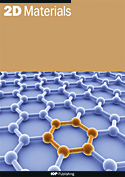more »
Cambridge, Massachusetts — June 20, 2016 — Graphenea is on the list of finalists for the “Best of West” award, presented each year at SEMICON West, one of the world's largest events on semiconductor technology. More than 700 companies exhibit at SEMICON West and 26,000+ professionals attend, representing the leading global technology companies. The “Best of West” award, presented by Solid State Technology and SEMI, was established to recognize new products moving the industry forward with technological developments in the electronics supply chain.
The Best of West 2016 Finalists will be displaying their tools on the show floor at Moscone Center from July 12-14. Graphenea was selected for the company's effort:
-
Graphenea:Graphene Integration on CMOS-Fab ─ Allows large-scale manufacture of 200mm CMOS-compatible graphene wafers (SEMI Standards), with low metal contamination levels. The industrial production method will produce uniform, large-scale/high-performance graphene in high yields and a reliable manner (Advanced Materials and Materials Management category; Booth #632)
The Best of West Award winner will be announced during SEMICON West (www.semiconwest.org) on Wednesday, July 13, 2016.
Graphenea will have the opportunity to do a presentation to showcase its product at the Best of West Showcase Session held at the TechXPOT South stage on Thursday, July 14 from 2:00pm-3:30pm.

Photo: Graphenea researchers at work on SEMI Standard graphene wafers
About SEMI
SEMI® connects more than 2,000 member companies and more than a quarter-million professionals worldwide to advance the science and business of electronics manufacturing. SEMI members are responsible for the innovations in materials, design, equipment, software, and services that enable smarter, faster, more powerful, and more affordable electronic products. Since 1970, SEMI has built connections that have helped our members grow more profitably, create new markets, and address common industry challenges together. SEMI maintains offices in Bangalore, Beijing, Berlin, Brussels, Grenoble, Hsinchu, Moscow, San Jose, Seoul, Shanghai, Singapore, Tokyo, and Washington, D.C. For more information about SEMI, visit www.semi.org and follow SEMI on LinkedIn and Twitter
About Graphenea
Graphenea, a leading company in graphene production and a venture backed by Repsol and CDTI, was established in 2010, and has since grown to be one of the world's largest providers of graphene. The company is headquartered at the nanotechnology cluster CIC nanoGune in San Sebastian, Spain and Boston. Graphenea employs 18 people and exports graphene materials to more than 1400 customers in 55 countries. The company has focused on constant improvement of graphene quality, becoming a supplier customers can rely on. Graphenea employs a team of skilled laboratory staff who have brought graphene film production techniques to a new level, offering the same high quality films on any substrate. Graphenea produces CVD graphene wafers and graphene oxide. Graphenea partners with large multinationals to develop custom graphene materials for their applications. Its research agility and ability to keep pace with the progress of graphene science and technology has allowed Graphenea to become the largest graphene supplier in the Graphene Flagship, a ten year project of the European Commission worth a billion euros. The company keeps a close relation with the world's leading scientists, regularly publishing scientific articles of the highest level.
Contact
Graphenea
Avenida de Tolosa, 76
20018 - Donostia/San Sebastián
Spain
Email: info@graphenea.com
Webpage: www.graphenea.com
Twitter: @Graphenea
via Graphenea

